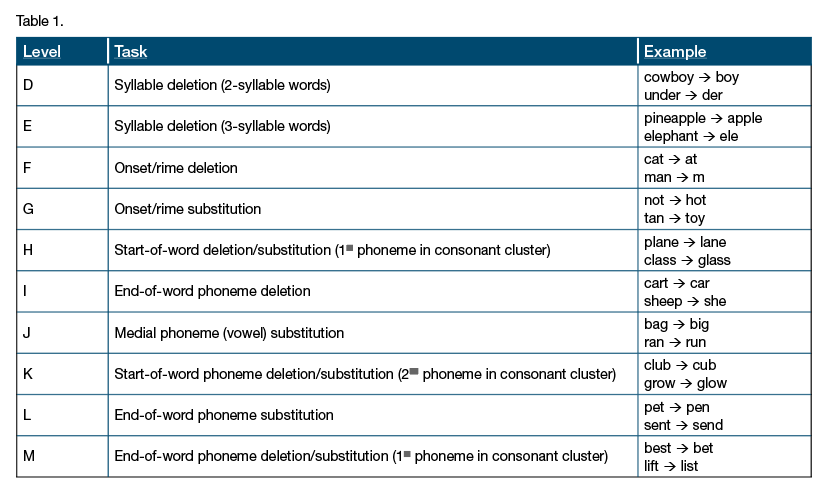
An excerpt from … ‘A deep dive into phonemic proficiency’ (Bell, 2023)
In recent years, there has been a spike in the popularity of literacy programs that claim to train young students in attaining phonemic proficiency.
Nicola Bell
Download PDF
This has led to (sometimes heated) discussions within both academic and educational circles, which have focused on the efficacy of these programs and the strength of research on which the programs’ rationales are founded. (For examples of the perspectives involved in these debates, see Brady, 2022; Clemens et al., 2021; Kilpatrick et al., 2022; Parker, 2022; Seidenberg, 2022; Shanahan, 2021.) Unquestionably, all parties involved in the discussions want only to promote the practices that will lead to the very best literacy outcomes for students. Nevertheless, there remains confusion about how certain instructional strategies related to phonemic proficiency fit into the “science of reading”. The aim of the present article is to address some of this confusion by investigating, in depth, one popular program that promotes such strategies: Equipped for Reading Success (Kilpatrick, 2016).
Specific phonological awareness tasks in the program
Table 1 lists all the phonological awareness tasks that students are expected to progress through to complete the program. These tasks are outlined in the book’s ‘Phonological Awareness Development Chart’ (p. 235 or Appendix A), and they correspond with levels in the ‘Phonological Awareness Screening Test’ (pp. 237–245 or Appendix C) and the program’s ‘One Minute Activities’ (pp. 129–226).
Within each level, students may progress from the Multisensory Stage (where they can only do the task with external prompts), to the Knowledge Stage (where they can do the task independently but not quickly), to the Automatic Stage (where they can do the task independently and within two seconds). The “external prompts” employed at the Multisensory Stage refer to letter stimuli, tokens, clapping or any form of teacher support.
Hence, it is only at this point that phonological awareness activities can involve letters, and to progress through the program, students must demonstrate that they can do the tasks in oral-only contexts.
Phonological awareness without letters
Kilpatrick makes it clear from the outset of the book that he sees phonological awareness as an oral language skill, and that the introduction of letters into a phonological or phonemic awareness activity fundamentally redefines it as a phonics activity.
“Phoneme awareness is an oral language skill.” (p. 15)
“A way to remember the difference between phonemic awareness and phonics is that you can do phoneme awareness with your eyes closed but you cannot do the phonic skill of sounding out with your eyes closed.” (p. 15)
“It must be kept in mind that this activity [i.e., using letters/ spelling to illustrate phonemic awareness concepts] is not phoneme awareness. Rather, it is phonics … Do not assume if students can do this successfully that they are demonstrating phoneme awareness.” (p. 79)
Contrary to this perspective, instruction that effectively targets phonemic awareness, whether delivered in a classroom or remedial context, often incorporates letter stimuli. Indeed, such an approach aligns with research evidence that demonstrates the efficacy of combining instruction in letter knowledge and phonemic awareness (see Chapter 3 of National Institute of Child Health and Development, 2008).
There is also a logical reason for using letter stimuli in phonemic awareness activities. Written graphemes provide a visual anchor for tasks that are otherwise abstract, complex and highly dependent on working memory. There is no empirically supported reason why they should be used only as an external support, rather than as an integral element of instruction. Phonemes are, after all, a “convenient fiction” (Seidenberg, 2021). The nature of coarticulation is such that spoken words are not truly separable into 44(-ish) individual speech sounds, each one categorically sounding and feeling a certain way. Nevertheless, we can approximate these sounds and feelings, and to do so is useful because knowing what sounds the squiggles on the page roughly represent is an excellent starting point in the journey towards learning to read.
As mentioned earlier, it is difficult to reconcile the reciprocal and interactive nature of reading development with the principles and strategies promoted in this program – in this case, with respect to having such a strong emphasis on oral-only phonemic awareness.

Phonological manipulation tasks
Another point regarding the tasks listed in Table 1, which form the basis of Kilpatrick’s program and assessment, is that they all involve the deletion or substitution (i.e., manipulation) of word parts.
The following quotes reflect Kilpatrick’s emphasis on training phonological awareness in general, and phonological manipulation in particular.
“Students with good phonological awareness are in a great position to become good readers, while students with poor phonological awareness almost always struggle in reading. Poor phonological awareness is the most common cause of poor reading. Reading problems can be prevented if all students are trained in letter- sound skills and phonological awareness, starting in kindergarten.” (p. 13)
“[P]honological manipulation represents the best way to address phonological awareness assessment and intervention. It has a stronger correlation with reading than any of the other tasks [e.g., segmentation or blending], it has the other tasks built into it, and it produces
the best results in reading intervention studies.” (pp. 75–76)
“[W]hen students respond instantly to a phoneme manipulation task, they are not even aware that the first step they performed involved efficient, unconscious segmentation of the target word. As a result, teachers can be assured that segmentation is automatic and unconscious. This represents phonemic proficiency and is the foundation of efficient orthographic mapping. It is for this reason that the Equipped for Reading Success program is based upon phonological manipulation activities. This training provides the assurance of the development of phonemic proficiency.” (p. 76)
“One Minute Activities use phonological manipulation. Thus, they incorporate the other phonological tasks: segmentation, isolation, and blending. For this reason, they are the most efficient way to train phonological awareness.” (p. 87)
There appear to be four main arguments that, within Equipped for Reading Success, are used as justifications for teaching phonological manipulation tasks.
Firstly, the author’s ideas are based on an interpretation of Ehri’s orthographic mapping theory, and it is this that provides the theoretical foundation for promoting phonological manipulation. However, in her formulation of the theory, Ehri mentions only the phonological awareness tasks of segmentation and blending, which are the key skills required when applying grapheme–phoneme correspondence knowledge to decoding and spelling (e.g., Ehri, 2017). This does not mean that teaching phonological manipulation is incompatible with the theory of orthographic mapping. It does mean with segmentation tasks, both blending and deletion tasks do appear more strongly correlated with reading measures – at least in the studies cited (i.e., Kilpatrick, 2012; Swank & Catts, 1994). Blending, though, is a “basic” phonological awareness task just like segmentation. So why is it not targeted in the training program or assessment?
The main reason appears to be related to Kilpatrick’s third point: that phonological manipulation tasks incorporate an element of blending anyway (as well as the other basic skills of segmentation and isolation). For example, to replace the /r/ in “grow” with /l/ (Level K), the student must:
- Segment the word into phonemes
- Isolate the /r/
- Substitute the /r/ with a /l/
- Blend together the phonemes to produce the resulting word.
By itself, the fact that manipulation tasks necessitate segmentation, isolation and blending does not mean such tasks are most effective in producing positive reading outcomes. It may instead be the case that phonological manipulation activities are unnecessary, and that better results would be seen if the basic skills most directly related to literacy development were targeted without imposing that additional working memory load.
This leads to a point that has not yet been factored into discussions at all: to perform the above steps without external prompts and in the space of two seconds requires a great deal from a student’s working memory. From a statistical perspective, this means that working memory is likely to account for at least some of the shared variance between phonological manipulation and reading proficiency. It is also why struggle a great deal. Could practising phonological manipulation improve these students’ working memory and, by extension, their reading skills?
Possibly, but working memory deficits have proven very resistant to training programs in the past (Melby-Lervåg et al., 2016). Again, we need to turn to the results from studies wherein phonological manipulation skills have been trained. that the theory provides no direct support for such teaching at the expense we need to draw conclusions about instruction from studies that have of instruction related to segmentation and blending.
Secondly, Kilpatrick argues that reading is more strongly correlated with the “advanced” phonological awareness task of deletion than with the “basic” phonological awareness task of segmentation. Indeed, in comparison implemented that instruction – not just those that have focused on correlations between skills.
From a practical perspective, the working memory factor inherent in phonological manipulation tasks also means that students with difficulties in this area can be expected to struggle a great deal. Could practising phonological manipulation improve these students’ working memory and, by extension, their reading skills? Possibly, but working memory deficits have proven very resistant to training programs in the past (Melby-Lervåg et al., 2016). Again, we need to turn to the results from studies wherein phonological manipulation skills have been trained.
This is an excerpt from Dr Nicola Bell’s piece, ‘A deep dive into phonemic proficiency’. The full article is available on the FiveFromFive website.
Dr Nicola Bell [@NicolaBellSP on Twitter] is a Research Fellow at MultiLit.
This article appeared in the September 2023 edition of Nomanis.